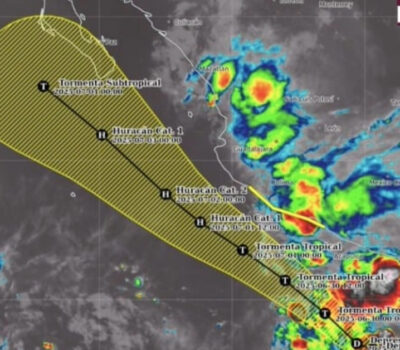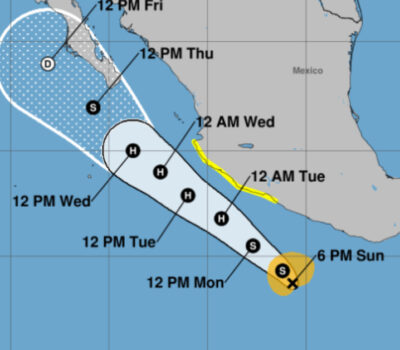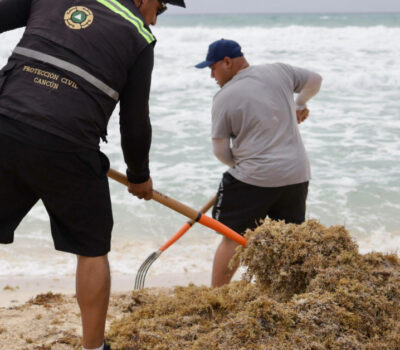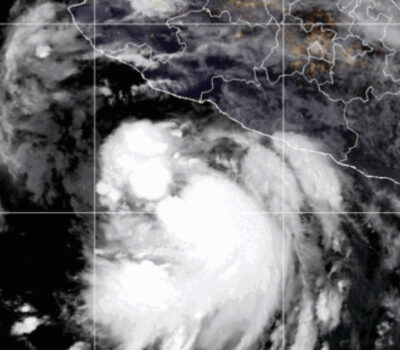Puerto Vallarta, Mexico – President Donald Trump’s announcement to impose tariffs on imports from Mexico, Canada, and China has left industry leaders and global markets on edge. Despite White House spokeswoman Karoline Leavitt’s confirmation that tariffs could be implemented today, uncertainty surrounds whether the President will follow through on his threats or use them as leverage in negotiations.
The proposed tariffs, part of Trump’s strategy to combat undocumented migration and drug trafficking, target nearly $1.6 billion in annual trade. While industry groups and government officials scramble to understand how the tariffs will be implemented, analysts speculate whether the President’s bold declarations are a negotiation tactic rather than an imminent economic measure.
Unclear Implementation Details
The President has threatened to impose a 25% tariff on goods from Canada and Mexico but has yet to clarify whether this would take immediate effect or be delayed to allow time for diplomatic talks. Key industries, particularly oil and automotive sectors, are bracing for potential disruptions.
According to the U.S. Census Bureau, Canadian and Mexican oil imports are crucial to the U.S. market. If tariffs are applied, fuel prices could spike, adding to the market’s nervousness.
A Campaign Promise Turned Policy Threat
Trump’s tariff rhetoric dates back to his presidential campaign when he first threatened a 100% tariff on cars imported from Mexico. In October, he escalated the proposal to a 200% tariff, aiming to pressure automakers to manufacture vehicles domestically.
After winning the presidency, Trump’s stance hardened, citing illegal immigration, drug trafficking, and trade imbalances as reasons for imposing tariffs. “Mexico and Canada have the absolute right and power to resolve this long-simmering problem. Until they do so, it’s time for them to pay a very high price,” Trump said at a press conference.
Mexico’s Response: Dialogue and Dignity
Mexican President Claudia Sheinbaum Pardo has emphasized the importance of diplomacy in addressing trade and migration issues. “We will always maintain dialogue. It is fundamental in the relationship between Mexico and the United States government,” she said, outlining contingency plans for various U.S. decisions.
Sheinbaum assured the Mexican public that their dignity and sovereignty would be defended through respectful dialogue and strategic planning.
Analysts Suspect Strategic Bluffing
Michael Robinet of S&P Global Mobility and other analysts believe Trump’s tariff threats may be a strategic move to push Canada and Mexico into renegotiating terms of the USMCA ahead of its 2026 renewal.
Such a tactic aligns with Trump’s previous use of aggressive trade measures to secure favorable outcomes. However, it risks escalating into a trade war if Mexico retaliates with its own tariffs on U.S. goods.
Possible Retaliation and Legal Disputes
A U.S. Congressional analysis warns that unilateral tariffs on Mexico could violate the United States-Mexico-Canada Agreement (USMCA). If that happens, Mexico could file a dispute and impose retaliatory tariffs, potentially impacting billions of dollars in U.S. exports.
Understanding Tariffs
Tariffs are taxes imposed on imported goods, serving as a source of government revenue, a tool for protecting domestic industries, and a means to regulate international trade.
Types of Tariffs:
- Ad Valorem Tariff: A percentage of the value of the imported good, such as a 10% tariff on an imported car.
- Specific Tariff: A fixed amount per unit, like $2 per kilogram of imported sugar.
- Mixed Tariff: Combines both percentage and fixed amount tariffs, such as 5% plus $1 per liter of imported gasoline.
Peso Weakens Amid Trump’s Tariff Threats Against Mexico
The Mexican peso faced significant volatility and depreciation following U.S. President Donald Trump’s announcement that tariffs on Mexican imports would take effect today, February 1.
The exchange rate closed at 20.68 pesos per dollar in wholesale transactions, representing a loss of 26 cents (1.27 percent) from the previous day and 40 cents (1.98 percent) since last Friday, according to data from the Bank of Mexico.
Trump’s unexpected statement overturned previous optimism after Reuters reported that the tariffs would be delayed until March. Earlier in the day, the peso had shown strength at 20.46 units per dollar, buoyed by confidence that an immediate tariff implementation was unlikely.
However, that positive trend reversed when White House spokeswoman Karoline Leavitt denied the Reuters report and confirmed that tariffs would indeed begin today. Trump’s subsequent confirmation escalated market uncertainty, with the U.S. president asserting there was “nothing Mexico, Canada, and China can do to avoid the tariffs starting this Saturday.”
Market Impact
Following Trump’s statements, the peso reached a high of 20.7590 per dollar in both Bank of Mexico records and international trading platforms.
Analysts warned that tariffs could cause further destabilization for the peso. JPMorgan projected a potential 12 percent decline in the currency if a 25 percent tariff is fully enforced on Mexican imports.
Investment analysts from Goldman Sachs, led by Stuart Jenkins, suggested that the market may view the tariffs as a temporary negotiation strategy. “Even if the Canadian and Mexican tariffs are implemented tomorrow, the market would price in some probability that the tariffs would not be permanent,” they wrote in a note to investors.
The tariff threat also rattled stock markets. The Mexican Stock Exchange (BMV) benchmark index fell 1.62 percent to 51,209.53 units, marking a 0.3 percent weekly decline despite a 3.4 percent gain in January.
The decline aligned with negative performances in Wall Street indices, where the Dow Jones lost 0.75 percent, the Nasdaq shed 0.28 percent, and the S&P 500 dropped 0.50 percent. “The afternoon discussions on tariffs created a new wave of uncertainty in the stock market,” explained Patrick O’Hare of Briefing.com.
Oil and Gold Prices
The tariff concerns extended to commodity markets. Oil prices experienced slight declines, with Brent crude down 11 cents at $76.76 per barrel, WTI crude dropping 20 cents to $72.53, and Mexico’s export blend decreasing by 94 cents to $68.69 per barrel.
Meanwhile, gold surged past the key $2,800 mark for the first time in history as investors sought refuge in safe-haven assets amid the growing market uncertainty.
Economic and Political Fallout
The imposition of tariffs on Mexican imports could have wide-reaching consequences for both the U.S. and Mexican economies, which maintain strong trade ties under the United States-Mexico-Canada Agreement (USMCA).
Economic experts have voiced concerns that unilateral tariffs imposed by Washington could violate the trade agreement, prompting potential retaliatory measures from Mexico. Mexican President Claudia Sheinbaum emphasized the importance of maintaining dialogue and cooperation while preparing various contingency plans to protect Mexico’s economic stability.
“We will always defend the dignity of our people and respect for our sovereignty. Dialogue as equals is essential,” Sheinbaum stated.
As uncertainty looms, financial and political analysts will closely monitor developments to assess the long-term impact of Trump’s controversial tariff decision.
Puerto Vallarta, Mexico - President Donald Trump's announcement to impose tariffs on imports from Mexico, Canada, and China has left industry leaders and global markets on edge. Despite White House spokeswoman Karoline Leavitt's confirmation that tariffs could be implemented today, uncertainty surrounds whether the President will follow through on his threats or use them as leverage in negotiations.












